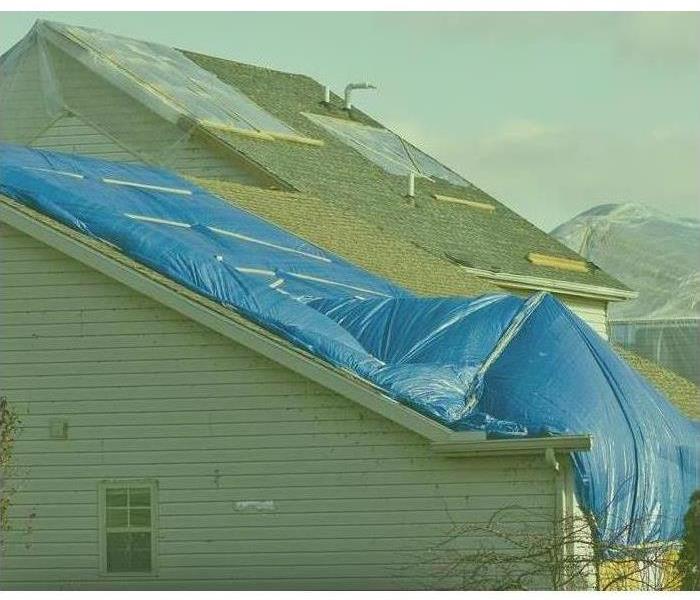Roof Damage happens anywhere
6/29/2020 (Permalink)
What to look for on your roof, after a STORM.
It doesn’t matter where you live in the United States. Every location has its own hazards for roofing. Weather varies from Hurricane to Hail to Snow to Tornadoes-it all wreaks havoc on a home…. especially a roof.
So, what do you do after a Storm? How do you identify roof damage, and what should you do about your roof after a major storm?
Types of Roof Storm Damage
Wind
Hurricane-force winds, which are 74 mph or greater, can cause visible damage to your home’s roof. High winds can remove or tear shingles- leaving the underlayment, roof deck, or waterproofing material exposed to the elements. Those then can become saturated and leads to damage inside the building.
During less severe storms, sudden, sharp gusts of wind can lift and even curl up the shingles. When shingles are installed, they’re purposefully overlapped to create a water-tight seal. This lifting and curling can break this seal, potentially leaving your roof exposed to damage from wind-driven rain.
Hail
Hailstorms typically are relatively short and rarely last for longer than 15 minutes. Hailstones can leave dents or marks in shingles and knock shingle granules loose. This is problematic because these granules protect your roof against rain and sun damage. Hail can also ruin the pleasing aesthetic appearance of your roof’s surface. This damage happens fast-and will need to be repaired quickly as well.
Standing Water
Roofs without proper drainage can experience problems with standing water after big rainstorms, especially in uneven areas. Clogged gutters cause backed up rainwater under your shingles, which allows moisture to potentially penetrate the underlayment or the roof deck. Water then can seep into a building causing mold and damage.
Debris
Depending on how severe the storm can be or what kind of storm, debris can end up on the top of your roof, everything from small branches to larger tree limbs. Large objects can dent or impact the surface of the shingle, leaving that area of the roof vulnerable to moisture intrusion, whereas lighter branches may not be as much of a problem.
SERVPRO of Bloomington/Pontiac can help tarp most buildings and work on repairing any issues that move towards the inside of your structure.






 24/7 Emergency Service
24/7 Emergency Service
